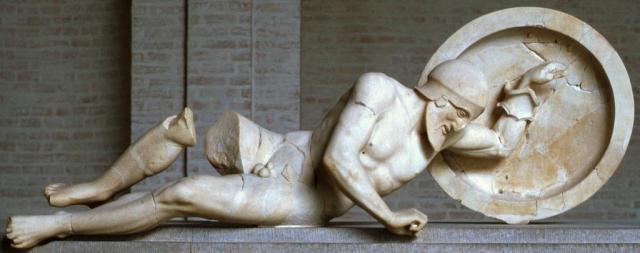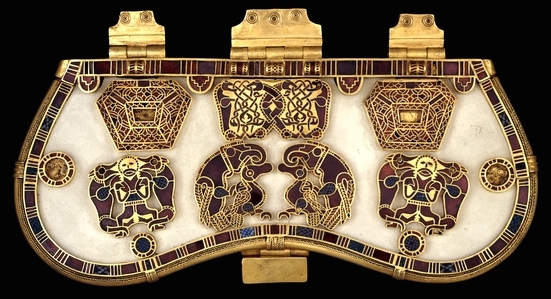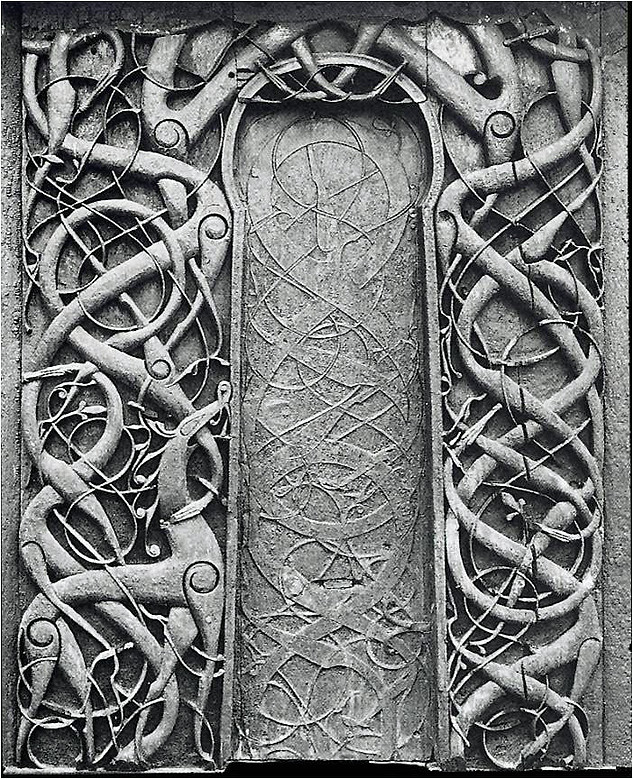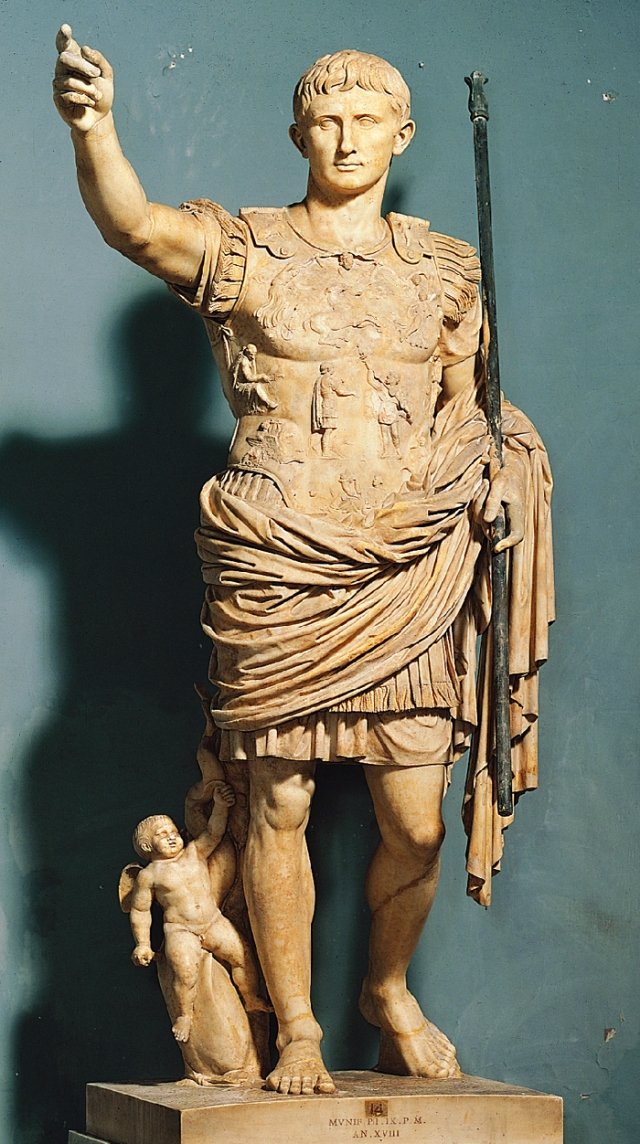 (fig. 1)
(fig. 1)
 (fig. 2)
(fig. 2)
The two statues shown in the above images, are figures that were set in the pediment of the Temple of Aphaia, in Greece. A pediment is the triangular upper part of the front of the temple, typically surmounting a portico of columns. The first warrior (fig. 1), lay facing the west and is approximately 5′ 2.5″ long. The second warrior (fig. 2), lay facing the east. His length is approximately 6′ 1″. Both of these sculptures were completed around 490 B.C. Though they were both damaged, they have since been restored to their former glory.
Though this pair of statues was mounted to the same temple and both portray deaths of soldiers, there are many differences between the two. The first warrior is shown reclining on his side, looking up at his spectators with a placid smile. One would almost be unable to tell that he is dying, if not for the bronze arrow in his side. In fact, apart from this arrow, the figure shows no sign of suffering, or any human emotion at all. This rigid sculpture reflects Archaic tones, unlike the second dying warrior who lay facing the east. Contrarily, his figure belongs to the Classical word of art. This is evident from the emotion that is visible. He seems very human in the way that he looks as though he is attempting to push himself up off the ground with his shield. His face, stressed, is focused on the ground and he is entirely concentrated on his own anguish, not the eyes of his spectators.
These two warriors provide a perfect comparison between the Archaic style and the Classical style. Just by looking at the dates in which they were sculpted, we are able to define exactly when the Classical revolution occurred.






 (fig. 1)
(fig. 1) (fig. 2)
(fig. 2)


